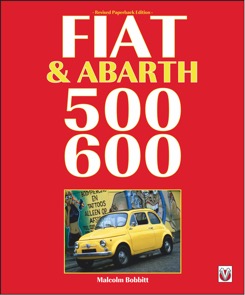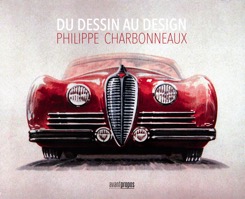The Last Works Minis – The end of a legend ISBN: 9781845840877
€32,50
The Last Works Minis – The end of a legend
Hardback • 304 pages • Over 500 pictures • 170 x 238mm
ISBN: 9781845840877
Features
– Completes the story of the ‘Works Mini’ in motorsport.
– First book to cover this part of the story
– Features a period of new technology.
– Features many famous names from motorsport.
– The authors own two of the cars.
– Lots of pictures.
– Accessible, enjoyable writing style
– The mini name is still very popular
Description
The Mini, the car of the 20th century and still in motorsport in 1997, 35 years after its first event. This book sets out to complete the untold recent history of the mighty ‘works Mini’ in international motorsport. How the Mini came to be in Monte Carlo and at the famous Nurburgring battling with the giant teams such as Fiat and Citroen. Of how different manufacturers where building ‘works’ cars on either side of Birmingham but not knowing the other existed. It tells the story of cars developed from 1994 up to the last group A cars of 1997, with fuel injection and six speed sequential gearboxes. The book also covers Rover’s plan to go around the world competing in various rounds of the world rally championship. It’s all here, copies of Rover internal documents plus many unseen photo’s that Rover would not want you to see, if they were still around. With many unseen photo’s of the cars development, copies of Rovers internal documents, copy pages from the road books of top rallies, all of this in colour this book truly brings this previously untold story to life.
Synopsis
The Mini, the car of the 20th century and still in motorsport in 1997, 35 years after its 1st event. This is it’s story. In the 60’s the BMC works teams using Mini’s were virtually unstoppable in their quest for recognition in the big world of rallying, they succeeded where others had failed and the BMC works teams were at the time probably the envy of the motorsport world. They introduced to the enthusiast the ‘Special Tuning’ or ‘ST’ as it was later known, a range of tuning products that the public could buy and fit to their own cars thus using the very same parts that the works team were using. Sadly the competition department was wound down and the ST finally went the same way in 1980. Imagine the excitement that hit the media when in the Autumn of 1993 Rover officially announced that they would fund the build of several cars to once again campaign the world famous Rallye Monte Carlo. Although they were not ‘works’cars, the large contribution of materials and money to the project it was regarded as tantamount to funding a works team, especially when Paddy Hopkirk was named as one of the drivers. It was this that started 4 years of ‘Works’backed mini’s to varying degrees, culminating in 1996 to a full works backed team of 2 cars and a full campaign of rallies and races for the three years. Typically the Mini of the 90’s, similarly to the Mini of the 60’s, carried with it a fair degree of controversy. Over the next four years there was plenty of it, with money being diverted by the sponsor from one team to another, one car even being stolen and top rallying stars carrying out secret test sessions, being just a few examples. All of this using cars that were designed way back in the 50’s and even still using the same basic design of engine and gearbox against competitors who were using cars designed over thirty years later with modern engines and transmissions. This book highlights how the use of fuel injection, distributor-less ignition, six speed gearboxes and modern tyres all helped to bring the mighty mini once again to the foreground of modern rallying and racing. In 1996 the ‘ST’ range of competition parts was re-introduced, with the parts coming from the latest 1996 build of ‘works’cars but once again in mid 1997 the project was pulled amid secrecy, sackings and bitter recriminations that even to this day have prevented the authors from being able to speak to those that were involved behind the scenes at the end of the line for the ‘Last Works Minis’. With many unseen photo’s of the cars development, copies of Rovers internal documents, copy pages from the road books of top rallies, all of this in colour this book truly brings this previously untold story to life.
Independent Reviews
Review from Australian Classic Car, March 2008
With such great success in events like the Monte Carlo Rally, the 1960s were halcyon days for BMC Minis. However, Mini production continued through to 2000 and the mid ’90s saw another launch onto the international competition stage. This excellent publication tells the story of when in 1993, Rover funded the preparation of a new batch of Minis for the next year’s Monte Carlo. Given that it was close to 30 years since the previous encounter, it was a momentous decision. As it happens, enthusiasm feeds on itself and the 1960s almost happened all over again when under British Motor Heritage, further cars were built for subsequent rallies and race events, such as the 1996 ADAC 24-hour Nurburgring race and again in the Monte Carlo from 1994 to 1997.
Read how a 35 year old design was made ready for modern rallying and how it performed in each event. As an ex-Mini owner, I thoroughly enjoyed the book and especially the myriad of photos of cars in various states of undress, on display and in full competition. Understandably, the snow and ice hasn’t changed all that much from the 1960s.
–
Review from New Zealand Classic Car, February 2008
With the Mini getting close to its 50th birthday, we can expect a plethora of books about Issigonis’s little marvel over the next couple of years.
This new title focuses on a detailed part of the Mini history, but should be of interest because of the unusual slant it takes. We all know about the exploits of people like Hopkirk and Makinen in the early days of Mini rallying, but this book offers a detailed look at some absolutely dedicated efforts to keep the Mini spirit alive one last time before the car was no longer eligible for international rallies.
In 2005, the authors bought a pair of Minis. One was the last ‘works’ car ever to finish the Monte Carlo Rally, and the other was the last Group A Mini ever built. They have now written about those cars and the final few seasons of the original Mini in world and UK rallying. As well as the Monte Carlo Rally (1994-97), the two Minis competed at the Network Q rally in the UK, the Catalunya Rally and the gruelling 24-hour race at the Nürburgring.
The amount of detail assembled in this book is amazing, and it’s accompanied by plenty of competition photographs and shots of the cars being prepared. For anyone contemplating restoring or rallying a classic Mini, this book is an absolute mine of information.
–
Review from Teme Valley Times, February 2008
The Mini is undoubtedly one of the best-known cars there is. In the 1960s it enjoyed massive success in motorsport, as well as having a starring role in ‘The Italian Job’. Less well-known is that fact that works-backed Minis reappeared in the 1990s. This book tells their story.
In 2005, Bryan Purves bought the last works Mini to finish the Monte Carlo Rally and Tim Brenchley bought the last works Group A Mini to be built. Bryan and Tim have combined their knowledge and experience to create this book.
The idea of entering the 1994 Monte Carlo Rally in a Mini could easily have been dismissed as a fantasy. Having Paddy Hopkirk drive one of the cars (30 years after he won the event in a Mini) simply makes the whole project sound even more unlikely. It sounds more like a Boys Own tale than a wonderful – but true – story. And if you’re wondering what the outcome was, then you should enjoy the book!
This is a fascinating and well-illustrated account of the trials and tribulations that faced the team as they tackled events such as the Monte Carlo and RAC Rallies. With around 300 pages, there is ample space to chronicle what went on, and how the team overcame the difficulties. These ranged from the inevitable mechanical failures and accidents, through to one of the cars being stolen.
Even if you know nothing about rallying, this book provides a useful insight into the sport, and even if you aren’t terribly interested in Minis per se, the enthusiasm of the writers and the inherent interest in the narrative should be enough to hold most people with an interest in motorsport.
–
Review from Octane, January 2008
So you thought the Mini’s competition history ended with the closure of BL’s Special Tuning Department in 1980? In fact, it had a surprisingly protracted swansong during the 1990s, starting with a Rover supported privateer attempt on the 1994 Monte Carlo Rally that spawned a host of other factory-backed entries, Not surprisingly, there were no great successes but this well-illustrated, 300-page hardback fills a significant niche in Mini history.
–
Review from MiniWorld, January 2008
The definitive guide to the Rover works Minis of 1993 to 1997 as entered by British Motor Heritage in rallies and races. Over 300 pages of history, detail and never seen before pics. Wallow in the Classic Mini’s final blast as a works motorsport entry and let the good, and not so good, times roll.
–
Review from Classics Monthly, January 2008
Much has been written about the Mini’s heyday, but this books chronicles the story of the works-backed cars 30 years later and gives a new spin to the ‘Mini in motorsport’ story.
–
Review from Startline, December 2007
Bryan Purves and Tim Brenchley have combined years of research and a wealth of personal experience to create this unique book. It is a fitting tribute to the cars that entranced, thrilled and surprised spectators and motorsport insiders alike through four decades of motorsport.
–
Review by Paul Gladstone for Motorsports Now!, Winter 2007
A well written account and filled with a wealth of reasonable quality photographs, this book traces the resurgence of the works-prepared Rover Coopers from the 1994 Monte Carlo entry.
Primarily to commemorate the 1964 winning car driven by Paddy Hopkirk, the book briefly traces Mini competition history and goes on to comprehensively cover pretty much all of the Rover Minis built and competed up to 2000.
With plenty of personal accounts from competitors and contructors, the book fills an essential part of Mini history and is a must for the library of every Mini fan.
It also provides a great deal of detail for those still wishing to prepare and compete in a ‘proper’ Mini. A shame, then, that the book does not cover the final chapter where, after a few attempts, Brian Cameron and Jon Southall’s Group N overall win on a WRC round is not included, neither are Pablo Raybold’s brave Safari attempts in 2000 and 2001.
Personally, I would also have liked to see more coverage of the Plant brothers forays at home and abroad. Still, I thoroughly enjoyed reading this and it will sit comfortably within my Mini library.
–
Review from the Southern Mini Owners Club, December 2007
If you are a fan of the classic Mini you will love this book. When I received it the first thing I did was flick through the pages – what was to be a quick scan ended up taking an hour and a half, stopping at the many photos and reading the captions, most of which I had never seen before.
The book starts with a brief history of Works Minis from BMC, British Leyland and Rover up to the present British Motor Heritage.
The next chapters go on to cover the 1994 to 1997 Rallye Monte Carlo which covers the setting up and the homologation of the car, and then covers in detail the progress of the rally. Also covered, the Network Q rallies from 1994 to 1995 and Nürburgring.
This book is full of useful and interesting information. If you are lucky enough to get this book for Christmas, or you have to buy it for yourself, you won’t be disappointed.
The book has an added local interest to SMOCers with reference to Bill Richards of Ashford throughout the book






